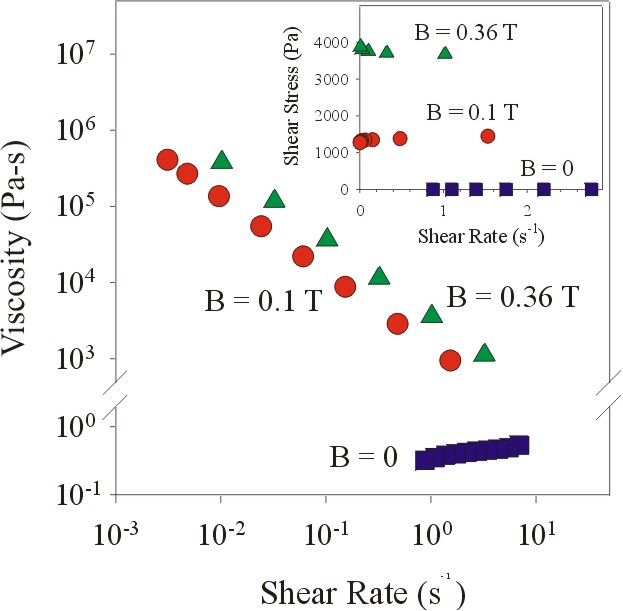Electrorheological and magnetorheological (ER and MR) fluids are fascinating materials, composed of particles suspended in a liquid, whose rheological properties are dramatically, rapidly, and reversibly altered by the application of external electric and magnetic fields, respectively. Apparent suspension viscosities can increase by orders of magnitude for electric fields on the order of 1 kV/mm for ER fluids, and for flux densities on the order of 1 T for MR fluids. Viscosity data for an MR fluid composed of 10 vol% iron spheres in silicone oil is presented in Figure 1.
The dramatic change in rheological properties caused by the applied field is associated with an equally dramatic change in the suspension microstructure. The applied field causes the particles to aggregate into columnar structures, as illustrated in Figure 2 for a 2 vol% suspension of iron particles in silicone oil (the direction of the external field is indicated by the arrow).
The dramatic change in rheological properties may be explained as follows. The application of the applied field induces dipoles (electric or magnetic) on the particles, aligned with the applied field. The dipoles attract one another head-to-tail, thus forming the fibrous aggregates. Making the suspension flow requires breaking these aggregates, and the extra required results in an increase in the apparent suspension viscosity.
The ability to electronically control stress transfer with these materials has motivated the research and development of numerous applications, including clutches, brakes, shock absorbers, engine mounts and control valves (Figure3) .
Currently, few MR devices and no ER devices have made it to commercialization. The main limitation, in both technologies, is a lack of effective fluids. The main goals of our research are (1) to improve our understanding of the underlying mechanisms that control fluid and device behavior, (2) to develop better fluids for specific applications, and (3) to develop predictive models of fluid and device performance that can be used to design and optimize MR and ER fluids and devices.


